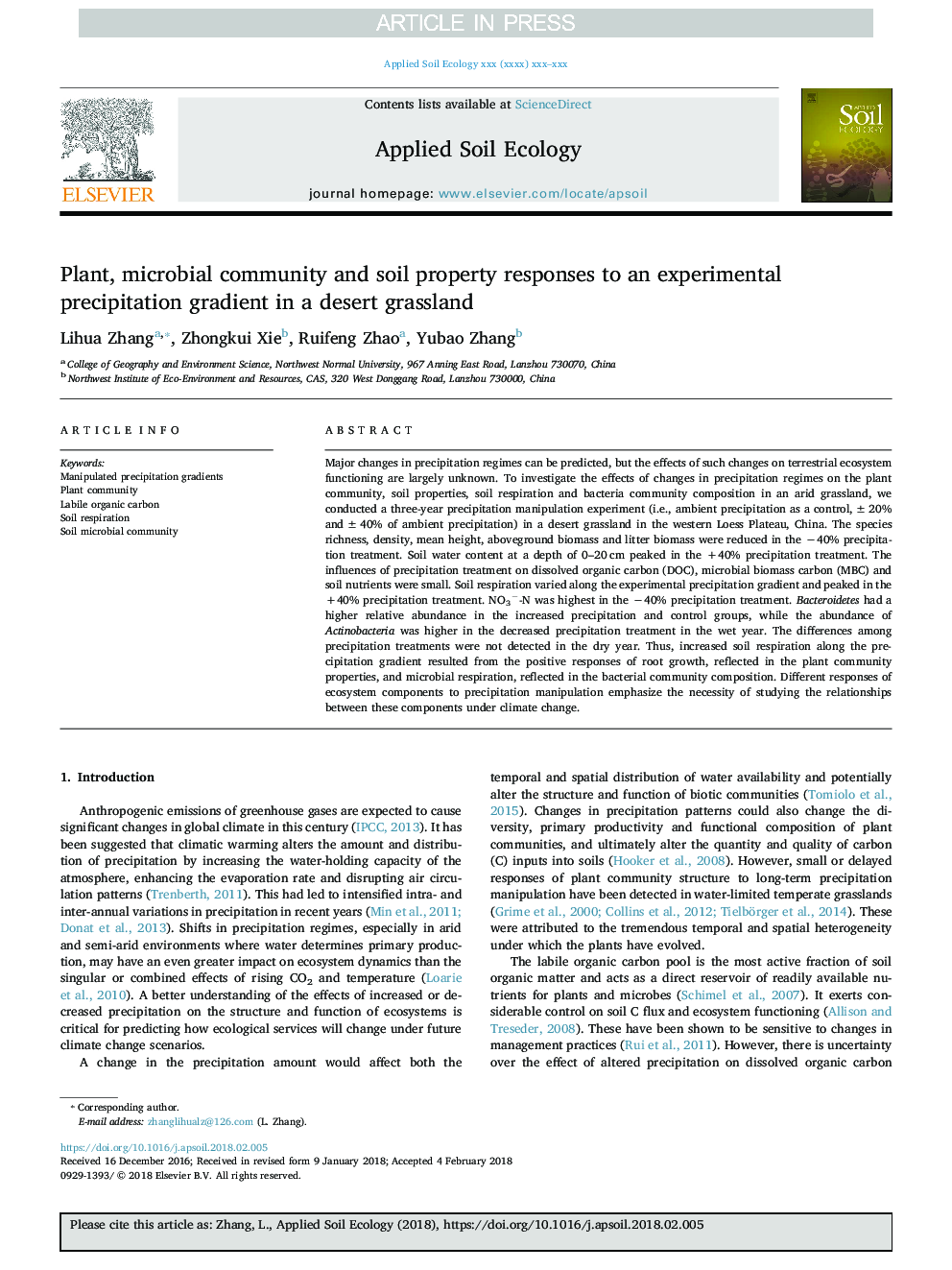| Article ID | Journal | Published Year | Pages | File Type |
|---|---|---|---|---|
| 8846646 | Applied Soil Ecology | 2018 | 9 Pages |
Abstract
Major changes in precipitation regimes can be predicted, but the effects of such changes on terrestrial ecosystem functioning are largely unknown. To investigate the effects of changes in precipitation regimes on the plant community, soil properties, soil respiration and bacteria community composition in an arid grassland, we conducted a three-year precipitation manipulation experiment (i.e., ambient precipitation as a control, ±20% and ±40% of ambient precipitation) in a desert grassland in the western Loess Plateau, China. The species richness, density, mean height, aboveground biomass and litter biomass were reduced in the â40% precipitation treatment. Soil water content at a depth of 0-20â¯cm peaked in the +40% precipitation treatment. The influences of precipitation treatment on dissolved organic carbon (DOC), microbial biomass carbon (MBC) and soil nutrients were small. Soil respiration varied along the experimental precipitation gradient and peaked in the +40% precipitation treatment. NO3â-N was highest in the â40% precipitation treatment. Bacteroidetes had a higher relative abundance in the increased precipitation and control groups, while the abundance of Actinobacteria was higher in the decreased precipitation treatment in the wet year. The differences among precipitation treatments were not detected in the dry year. Thus, increased soil respiration along the precipitation gradient resulted from the positive responses of root growth, reflected in the plant community properties, and microbial respiration, reflected in the bacterial community composition. Different responses of ecosystem components to precipitation manipulation emphasize the necessity of studying the relationships between these components under climate change.
Related Topics
Life Sciences
Agricultural and Biological Sciences
Ecology, Evolution, Behavior and Systematics
Authors
Lihua Zhang, Zhongkui Xie, Ruifeng Zhao, Yubao Zhang,
